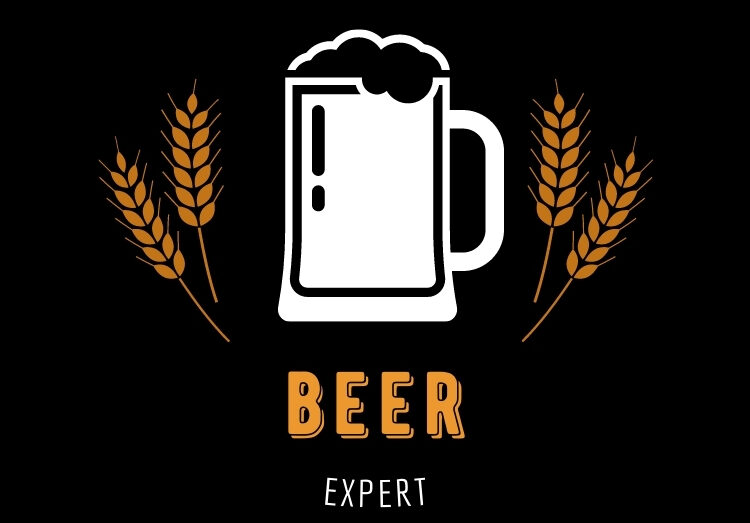Lager is an immensely popular type of beer, characterised by a clean taste and high levels of carbonation thanks to its particular brewing style. There are a wide variety of lagers ranging from dark to light and sweet to bitter, the most common being the ‘pale-lagers’ or pilsners. Lagers are typically 3-5% alcohol by volume.
History
The word lager comes from the German lagern (‘to store”), and it is in Bavaria that the drink finds its origins. In the early nineteenth century Bavarian brewers began experimenting with brewing techniques that involved storing their beers in cold beer cellars for prolonged periods, using bottom-fermenting yeast. After an initial fermentation the beer would be given a second “lagering” period at a low temperature, and then would be stored in refrigerated beer cellars. They could be kept for a few weeks or several months, during which time the drink would mellow and clear.
In the early days of lagering some brewers would take their beer to frozen caves of the Bavarian Alps packed with ice from the lakes and mountains, and leave it there for the summer. This long brewing meant that the yeast and other heavy matter in the beer settled leaving a drink with a clean taste and pale colour, and also carry high levels of carbon dioxide. These Bavarian lagerbiers were much darker than the pale lagers that most people recognise today, due in part to the heavy water of the region. However, these dark brown lagers known as Dunkel or Dunkles are still produced in Bavaria today.
Over the first half of the nineteenth century brewers continued to experiment with the lagering technique as it spread across Europe. The beer maker Gabriel Sedlmayr II the Younger of the Bavarian Spaten Brewery set off on a journey around European countries with the intention of perfecting lager brewing and, as a result, others who he met began their own ventures. By 1840 the Austrians developed the amber-red Viennese beer, using lighter malts than the Bavarians. The town of Plzen in Bohemia had been making beer since the 1200s and in 1842 the Bavarian brewer Josef Groll travelled there and tested a new lager recipe. By a fortunate coincidence of the region’s soft water and the local barley, which is low in protein, the first golden beer was achieved. This drink became known as Pilsner, Pilsner Urquell (“Original Pilsner”) being a typical example. The town began producing this golden beer on large scale, with vast beer cellars cut into rock for the lagering process. Soon other cities took up Pilsner production, Budweis for instance, and before long the drink became a huge success across Europe. When stoneware steins and bottles were replaced by factory made glass the prominence of golden lagers was given an extra boost as consumers acquired a taste for the light body and pale colour of the drink.
Whilst the drink became a staple of the European diet, lager brewing and drinking spread all over the world. In the 1850s German brewers took their techniques and Bavarian hops to USA. Here the trend for pale, light-bodied lagers would be continued, culminating in 1993 when the Miller brewery produced Clear Beer, a drink with the colourless appearance of lemonade.
Most of the pale lagers that are drunk today are based on Pilsner style beers, and are produced worldwide. Modern developments in fermentation control mean that lagers can be mass-produced and stored for much shorter periods, typically 1-3 weeks, and the characteristic carbon dioxide can be added to mimic traditionally brewed lager. Many would argue modern day mass-produced lagers come nowhere near the delights of traditionally brewed beer, and any one who had sampled a stein of real lager in the beer kellars of Munich would agree.
Types of Lager
There are a wide rage of lager varieties to choose from all of which are available in England from supermarkets, specialist off-licences and pubs and bars that specialise in supplying quality Export lagers:
- Bock/Doppledock: Strong, heavy, medium to dark lagers.
- Dortmund: A clean lager, with a malty taste.
- Dunkel: (‘dark’ in German) dark lager from Munich
- Helles: (pale beer): A pale golden lager, with a malty taste.
- Oktoberfest/Märzen: A deep amber beer originally brewed in March.
- Pilsner: A goldeb light beerwith a slight syrupy taste.
- Schwarzbier: A dark lager with a chocolate-like flavour.
- Vienna Lager: A reddish borwn beer with a malty taste.
- Spezial: A storng, full-bodied, bittersweet lager. In recent years lager has unfairly been associated with yob culture, with the rise of the ‘lager-lout’. This is a grossly misplaced image, as lager is a beverage of highly refined character, a pleasure to the palate of any discerning connoisseur.
